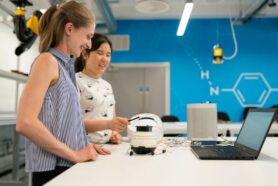
In the space of product lifecycle management (PLM), a very important question usually triggers many discussions: Should companies first refine their processes or dive straight into implementing a PLM system? This debate is fueled by the traditional challenges associated with PLM implementation – notably, the high costs and complex integration requirements. It usually triggers a debate about business transformation that requires an agreement between different players, strategy definition and then coming to PLM system implementation as part of this business transformation agreement. While I agree about the importance of PLM business strategy, in the fast-moving world of agile product development, it sometimes sounds like 1995… Is there a better way and how to answer this question in 2024?
Traditional PLM, SaaS PLM Services, and System of Engagement
Earlier last year, I joined a very interesting discussion organized by Jos Voskuil (also known as Virtual Dutchman). The discussion brought an amazing group of people together – Andre Wegner from Authentise, MJ Smith from CoLab, and Joe Voskuil. The topic was a system of engagement and how modern SaaS services can change the landscape of traditional PLM implementation. If you have some time during the weekend, watch this video. Otherwise, just skip and move forward.
What we see a lot is how companies are struggling to connect people and communicate together to perform tasks without being dependent on complex operations in traditional systems. As a result, teams created a way to use Excel spreadsheets, PowerPoint presentations, and many other “homegrown” tools to deal with the data.
This is where many companies are stuck in the development of strategy instead of organizing a better process for PLM implementation. Is there a better way to go?
The emergence of Software as a Service (SaaS) PLM solutions, with platforms like OpenBOM, is reshaping this conversation. These modern SaaS offerings, with their flexible data models, seamless integrations, and the option for instant trials, present a compelling argument for reevaluating the “process first” doctrine.
The Shift to Modern SaaS Services
Traditionally, the PLM implementation journey was fraught with hurdles: significant financial investment, lengthy implementation times, and the daunting task of integrating with existing systems. However, the landscape is changing. Modern SaaS PLM services offer a breath of fresh air, particularly through features like instant trials and out-of-the-box CAD integrations.
These capabilities not only mitigate the risks associated with PLM adoption but also streamline the entire process, making PLM implementations more accessible and less intimidating.
OpenBOM’s Role in Reimagining PLM Implementation
OpenBOM stands at the forefront of this transformation, providing immediate access to PDM/PLM services. With out-of-the-box integrations with various CAD systems, OpenBOM effortlessly captures essential data, laying the groundwork for an agile PLM implementation. By offering a flexible data workspace, it enables companies to embark on a phased PLM adoption, aligning with agile development principles. This approach not only enhances team collaboration during the implementation phase but also significantly reduces the associated risks.
The Agile Advantage with Online Services
The agility offered by modern online PLM services like OpenBOM and other system of engagements cannot be overstated. These platforms facilitate a smoother, more collaborative implementation process, ensuring that all team members are on the same page.
The flexibility to start with an instant free trial (call it a pilot) before transitioning to more comprehensive implementation services, including monthly and annual plans, allows companies to tailor the PLM adoption to their specific goals and timelines.
OpenBOM’s Flexible and Scalable Architecture
A key advantage of OpenBOM is its scalable architecture, which supports a seamless transition from free to enterprise-level subscriptions. This flexibility ensures that as a company’s needs evolve, its PLM environment can grow correspondingly, without the need for a complete system overhaul.
This scalability is crucial for businesses looking to gradually expand their PLM capabilities in line with their development and growth trajectories.
Conclusion
The advent of modern PLM technology, particularly through multi-tenant platforms like OpenBOM, has significantly altered the landscape of PLM implementation. By offering instant trials and robust out-of-the-box integrations, these platforms facilitate a more agile, risk-mitigated approach to PLM adoption.
This evolution effectively concludes the longstanding debate over whether to prioritize business process transformation or PLM implementation first. With OpenBOM, companies no longer have to choose – they can begin their PLM journey today with a free trial, continue with a small pilot, and embark on a path to streamlined product lifecycle management that aligns with their growth and innovation goals. The core difference between OpenBOM and traditional PLM is a combination of instant start using out-of-the-box service combined with a flexible data model and robust integrations.
Discover what OpenBOM can do for your organization by registering for a free trial today, and take the first step towards a more agile, integrated, and efficient PLM process.
Best, Oleg
Join our newsletter to receive a weekly portion of news, articles, and tips about OpenBOM and our community.










